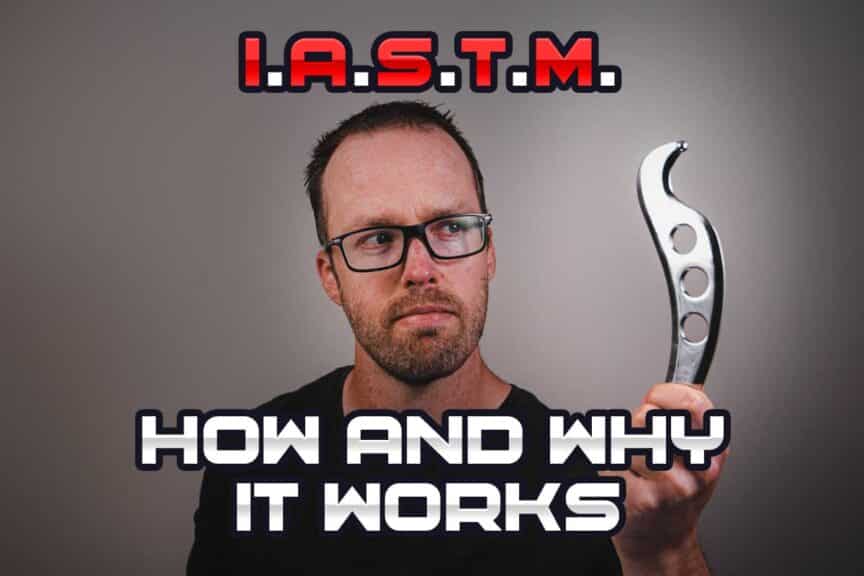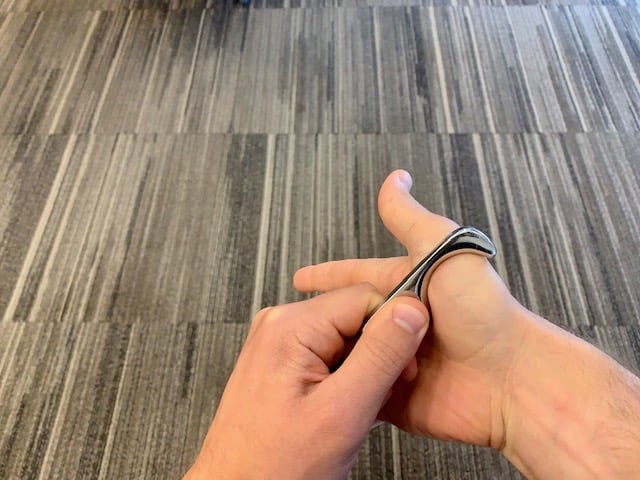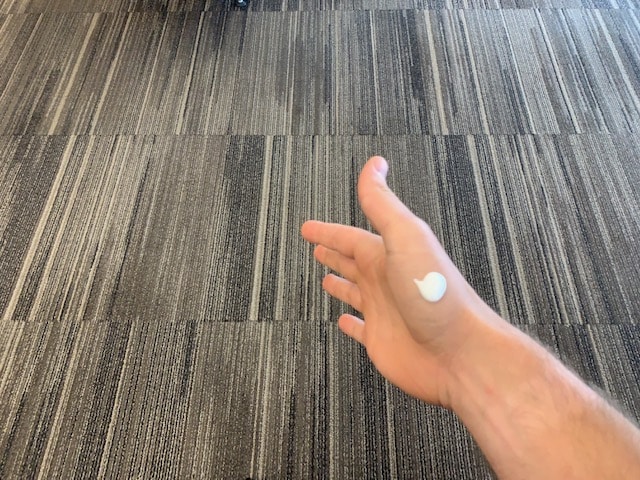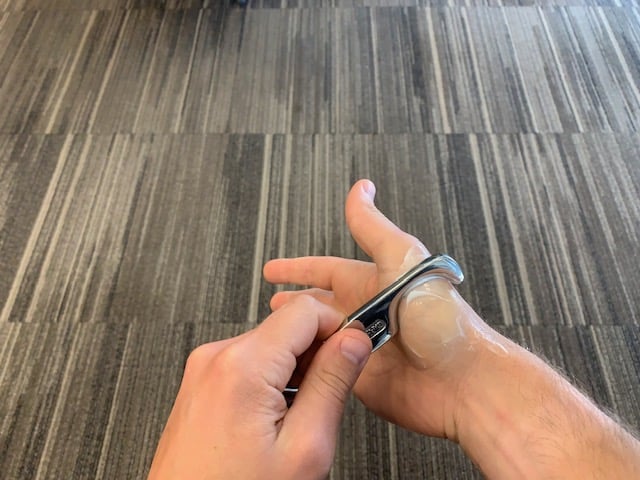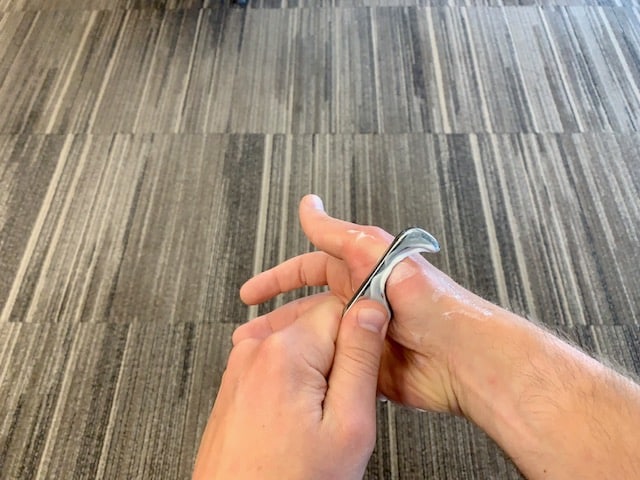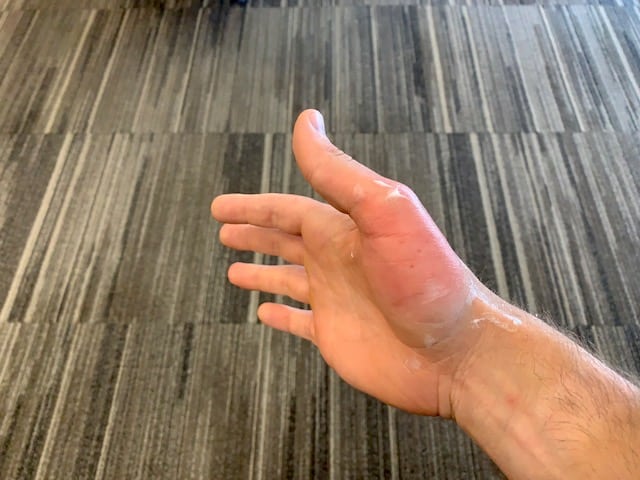Instrument-Assisted Soft Tissue Mobilization (otherwise known as IASTM) has become a lot more popular in the world of certain healthcare professions over the past decade or so. While it’s been around for quite some time, its recent popularity surge has exposed many individuals to this treatment technique, and left many who have seen the shiny, metal tools wondering exactly what it is, what it does and if it actually works or not.
IASTM is a treatment technique that is used to help decrease certain types of pain and to help restore movement/mobility within the tissues being treated. These changes occur through improving blood flow within the area while helping certain tissues to remodel and align in more ideal ways. The end result can be faster healing time, healthier tissue and less pain.
(A more geeky/scientific breakdown of this process is discussed within this article, if you are curious about or looking for further specific details of the process.)
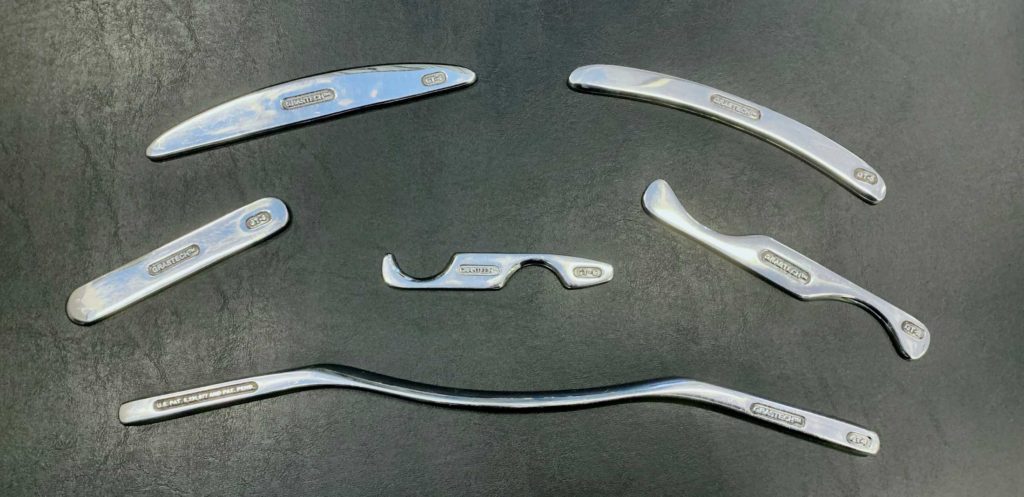
If you’re considering or wanting to pick up your own IASTM tool(s), please don’t spend tons of money doing so! Read my article: Why You Shouldn’t Spend Tons of Money on IASTM Tools on how you can get amazing tools at a fraction of the price of the more prominent, name brand tools.
Here’s a quick breakdown of the topics covered within this article:
- What does IASTM actually do?
- How exactly is IASTM performed?
- Is IASTM treatment uncomfortable?
- Does IASTM have any research behind it to support its use?
- Are different IASTM tools used for different parts of the body?
- Why do practitioners choose to use IASTM? (Benefits to patients and practitioners)
- What does IASTM actually do?
What does IASTM actually do?
IASTM is most commonly used as a treatment technique on certain tissues within the body to help promote strength, health, function and recovery of injured tissues. Typically it is used for muscles, tendons and superficial ligaments (ligaments that are close to the skin, such as the ligaments on the side of the knee).
When any of these tissues get overused, are under chronic tension or get injured, the body attempts to heal and strengthen these tissues at the cellular level by creating new cells. This process can inadvertently also lead to fibrosis (thickening or hardening) of the injured tissue(s) and can even result in the formation of scar tissue.
This attempted recovery process by the body is all well and good except for the fact that these inadvertent changes can reduce the functional abilities of the injured tissues; the tissues become less elastic and sort of “sticky”, resulting in them being less supple, more painful and less functionally capable to the demands of physical movement.
When scar tissue builds up, it can become problematic from the standpoint that it can become a barrier that limits healthy amounts of oxygen and nutrients to the tissue that is injured. This makes full recovery of the injured tissues incredibly challenging. It also results in the tissue being at a higher risk of re-injury as a result.
Enter IASTM
IASTM aims to break up, reduce or eliminate the scar tissue that can form in or around tissues that are unhealthy as the body makes its best attempts at structural repair. Removing this scar tissue (sometimes referred to as “adhesions”), allows for improved oxygen, fluid and nutrient exchange to the unhealthy cells that are sort of being starved of these critical supplies due to the barrier of scar tissue. With scar tissue being mobilized, broken down and reduced, the cellular recovery process to injured/unhealthy tissues is essentially re-ignited and recovery and health of these tissues can be maximized.
As a nice little bonus: due to the pressure, direction and and shear forces applied by the IASTM tool on the tissues being treated, there’s evidence to suggest that the formation of the new tissues is positively influenced in a way that creates a stronger, more ideal layout of scaffolding for structural resilience and function.
Injury recovery acceleration with IASTM
What’s even better is that evidence has shown that injury rates can be accelerated in terms of recovery when IASTM is utilized. This seems to take place by mobilizing an increased number of fibroblasts (cells that produce collagen, a type of structural protein highly abundant in tissues) to the area that receives IASTM treatment. This localized increase in fibroblasts results in up-regulation of new collagen being synthesized and laid down, allowing for greater rates of tissue regeneration, thus quicker healing.
How exactly is IASTM performed?
Once the practitioner has determined that it is appropriate to perform IASTM on an individual and that they are likely to benefit from it, they will select the appropriate IASTM tool for the body part that is about to be treated.
Next, the practitioner will apply some lotion to the skin (Lubriderm works great) in order to reduce friction to the skin during the treatment. The tool will then be applied to the skin with an appropriate amount of pressure and the practitioner will then move the beveled edge of the blade over the tissue. There are numerous ways this can be done – it can be with short, rapid strokes, strokes in one direction or many directions, long and slow strokes, etc. As this is being carried out, the patient’s skin will likely begin to experience an increase in local blood flow (the skin will likely become pink).
The overall treatment process doesn’t take very long, depending on the size and intensity of the area being treated. It’s possible to treat multiple areas of the body within a single session, if needed and the treatment can be combined with traditional hands-on treatment if needed or desired.
How many IASTM treatment sessions are needed to see improvements?
Like any other treatment intervention, the number of treatment sessions that it will take before noticeable and/or perceptible changes take place will depend on a variety of factors, such as how unhealthy the treated tissues initially are, how long they’ve been unhealthy for, your overall health status, nutritional status, your age and other modifiable and non-modifiable factors pertaining to you as an individual.
A quick note on skin discoloration
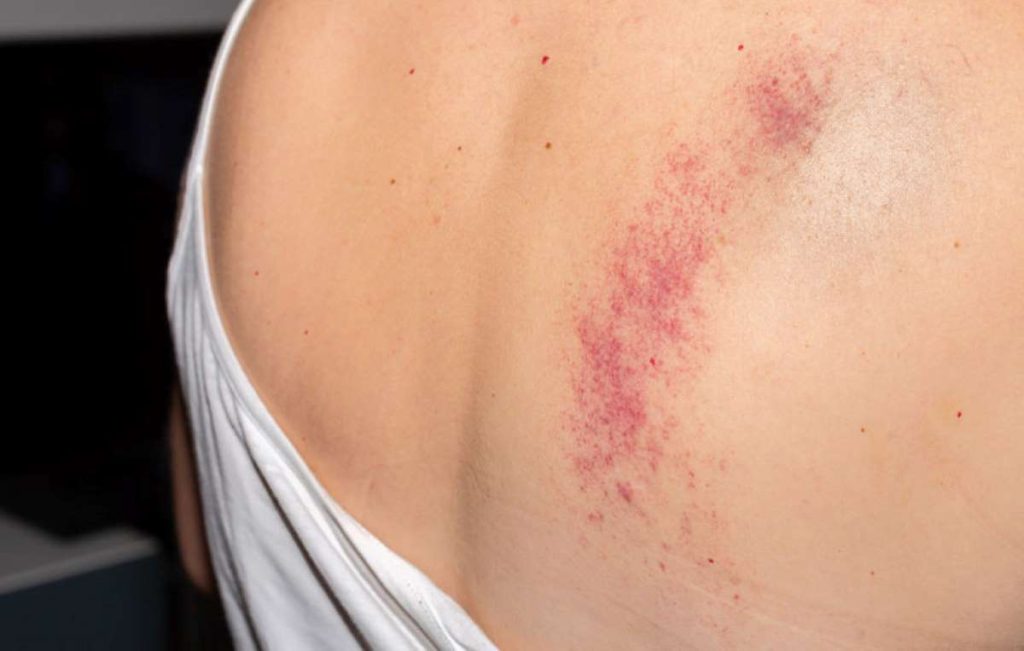
Depending on certain factors, an individual’s skin may appear to be slightly bruised or purple for a few days after treatment. This is largely determined by the aggressiveness that the practitioner uses on the area during treatment (more aggressive = more potential for bruising).
This discolouration is known as petechiae (link to Wikipedia article), and is the result of capillaries (extremely tiny blood vessels) within the skin rupturing during treatment, leaking blood into the skin. While there is nothing dangerous or harmful with this in healthy populations, excessive amounts of it should be avoided, as IASTM can produce beneficial changes without treatment to this extreme extent. I personally tend to perform treatment to an area right up to the very first signs of this taking place, and then cease treatment to the area at that point.
Is IASTM treatment uncomfortable?
IASTM treatment by and large should not be uncomfortable. There may be some discomfort depending on the sensitivity and condition of the area being treated, but the practitioner can adjust their treatment technique to suit your comfort level.
Some patients/individuals prefer a more aggressive treatment (where the practitioner uses more pressure or intensity) while others prefer less aggressive treatments. This tends to result in greater amounts (and quicker development) of petechiae appearing on the skin due to the increased pressure and shearing forces being applied to the skin by the IASTM tool.
There is no single, universal way to perform IASTM, and while there are principles and guidelines to follow, results can be attained through a variety of treatment applications.
Does IASTM have any research behind it to support its use?
There’s some pretty neat research and subsequent findings that have been shown within literature for various aspects of IASTM. While I won’t go into great detail within this article about all of the various findings that have been shown with IASTM in recent literature, here’s a list of some studies and the subsequent results that were found. I have provided links to each study if you would like to read more:
- Improving blood and nutrient supply to injured tissues along with migration of fibroblasts to the treated area have been found by Baker et al. (2013), Davidson et al., (1997), Gehlsen et al., (1999) and Hammer, (2008). (Links all take you to the respective studies.)
- The positive influence of IASTM on the resynthesis and re-organization of collagen alignment has also been found by Davidson et al., (1997) and Gehlsen et al., (1999).
- A study by Loghmani & Warden in 2009 (links to PDF of article) showed that IASTM to the MCL (medial collateral ligament) within rats produced accelerated healing compared to untreated ligament. The treated ligament also showed better collagen alignment and less scar tissue formation than the untreated ligament.
- In another paper, Loghmani & Warden (2013) (links to the article) found that IASTM to the injured MCL of rats produced increases in vascular responses (changes in blood flow).
- There are other studies that can be listed, but in the interest of time, I won’t type them out. If you’d like to take a look at them, check out this journal article: Therapeutic effectiveness of instrument-assisted soft tissue mobilization for soft tissue injury: mechanisms and practical application which will take you to a journal article by Kim, Sung and Lee, that will describe the findings of other studies that have looked at the various effects of IASTM.
Are different IASTM tools used for different parts of the body?
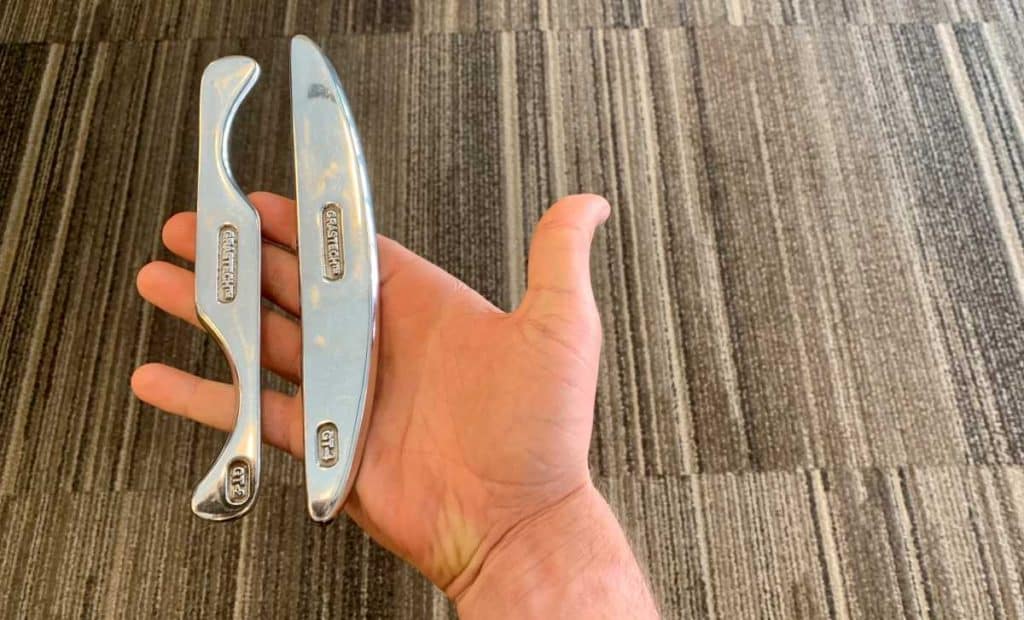
Practitioners will oftentimes use different IASTM tools on different body parts that they are working on. The reason for doing so is to treat each part of the body as effectively and as appropriately as possible. Just like a carpenter in a woodworking shop, slight variations in tools can yield big differences in outcomes depending on what those tools are being used for. Sometimes you need big wrenches in the shop, other times you need small ones.
Why do practitioners choose to use IASTM?
There can be a number of reasons why a practitioner chooses to incorporate IASTM into their treatment for a patient. These reasons tend to benefit both the patient who is being treated as well as the practitioner themselves.
Benefits to the patient
Aside from helping to improve blood flow and make healthy changes to the tight/painful tissues, IASTM can benefit the patient by targeting tissues to a deeper level than what might be able to be achieved through the practitioners hands alone. In addition to this, a greater area of tissue can usually be treated in a shorter duration of time through IASTM than with hands-on treatment only.
Lastly, the ability to target these specific tissues more effectively leads to a decrease in overall treatment time/number of visits that a patient may be required to make, due to IASTM potentially providing more effective results with each treatment session that compared to hands-only treatment. This is a major benefit to the patient in that they feel better quicker while saving a lot of time (and money) by not needing additional treatment sessions.
Benefits to the practitioner
Practitioners often choose to use IASTM for a few key reasons. Aside from the aforementioned deeper tissue treatment depth, the use of IASTM tools greatly reduces fatigue incurred by the practitioner (keep in mind they have to treat multiple people each and every day at work, not just you). The tools do this in particular by increasing mechanical advantage when applying appropriate force to the area being treated.
Fun fact: Well, actually it’s not “fun” but it’s a fact that healthcare practitioners who use manual therapy (hands-on treatment) in their daily treatments are at increased risk of developing osteoarthritis (OA) in their metacarpal phalangeal (MCP) joint at the base of their thumbs, due to the extensive amount of wear and tear this joint receives when providing manual therapy to others.
Painful thumb joints are devastating to those who provide manual therapy on their patients. So, incorporating IASTM to spare these joints and prolong the career of the practitioner (while simultaneously providing high quality treatment) makes perfect sense and can be a wise move for the practitioner to make.
Concluding remarks
IASTM is a pretty cool treatment modality to have in one’s arsenal. Every tool will have its respective time and place for when it’s appropriate (and not appropriate) to use, and when appropriate, IASTM can produce some very favourable changes in the patient’s pain perception along with structural changes to the treated tissues at the cellular level.
It can be a great treatment intervention to employ if muscles, tendons and/or ligaments are in an unhealthy state – either due to constant tension and repetitive overload or from an acute injury (such as straining a muscle or mildly spraining a ligament). It’s mechanisms for healing are multifaceted but are largely attributable to removing adhesions or scar tissue, which can marginalize the recovery of injured tissue if left untreated.
There’s some good evidence within literature that suggests IASTM is worthy of use, so long as its application is preceded by appropriate clinical reason alongside appropriate treatment technique (just as any other therapeutic application). Different body parts may require different IASTM tools, and each practitioner may perform the treatment in a slightly different way.
The treatment itself shouldn’t be overly uncomfortable, and shouldn’t leave you terribly discoloured afterwards. Rather, it should help to restore movement and accelerate tissue repair, leaving your tissues ultimately be stronger and healthier than they were before treatment.
Move well. Live bold.
-Jim
Works cited:

Hi! I’m Jim Wittstrom, PT, DPT, CSCS, Pn1.
I am a physical therapist who is passionate about all things pertaining to strength & conditioning, human movement, injury prevention and rehabilitation. I created StrengthResurgence.com in order to help others become stronger and healthier. I also love helping aspiring students and therapists fulfill their dreams of becoming successful in school and within their clinical PT practice. Thanks for checking out my site!

